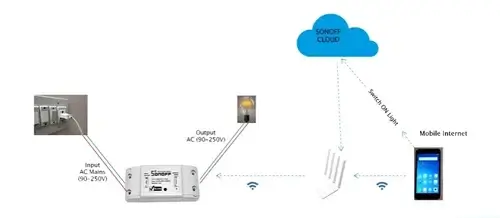Temperature sensing is one of the cornerstones of the Internet of Things (IoT). Whether it’s ensuring vaccines remain safe during transport, regulating smart home climates, or monitoring industrial machinery, reliable temperature data makes systems smarter and safer. Among the many ways to measure temperature, resistance type sensors stand out for their accuracy and dependability.
What Are Resistance Type Temperature Sensors?
Resistance type temperature sensors measure temperature by observing changes in electrical resistance. The principle is straightforward: as temperature changes, the resistance of certain materials also changes. By tracking these variations, IoT systems can interpret temperature with remarkable precision.
Typically, metals like platinum, nickel, or copper increase in resistance as temperature rises. Thermistors, which are made from semiconductors, can either increase or decrease in resistance depending on their design. This makes them versatile for a range of IoT applications.
Types of Resistance Temperature Sensors
Resistance Temperature Detectors (RTDs)
RTDs are made from pure metals, with platinum being the most common. Their resistance increases in a highly predictable, nearly linear fashion as temperature rises. Because of this, RTDs are prized for their accuracy.
Example: An RTD sensor can be embedded into an IoT-enabled cold storage system to make sure perishable goods stay within safe temperature limits.
Thermistors
Thermistors are constructed from semiconductor materials and are extremely sensitive to small temperature changes. They come in two main types:
- NTC (Negative Temperature Coefficient): Resistance decreases as temperature increases.
- PTC (Positive Temperature Coefficient): Resistance increases as temperature increases.
Example: In smart HVAC systems, NTC thermistors allow IoT devices to fine-tune heating and cooling for energy efficiency and comfort.
Metal Wire Sensors
Although less common in consumer IoT applications, some sensors measure temperature through resistance changes in specialized metal wires. These are more relevant in industrial IoT where durability and ruggedness are crucial.
Demonstration: A Greenhouse Example
Imagine setting up a smart greenhouse. A thermistor is placed inside to monitor conditions. When connected to a microcontroller like an ESP32, the sensor’s resistance changes as temperature shifts. The microcontroller interprets these changes and converts them into temperature readings.
From there, the data can be sent wirelessly to a cloud dashboard. The system can notify the farmer if conditions become unfavorable for crops. This simple setup demonstrates how resistance-based sensors form the backbone of many IoT solutions.
Real-World Applications
- Cold Chain Logistics: RTDs ensure pharmaceuticals, frozen foods, and chemicals remain safe during transport.
- Smart Cities: Thermistors integrated into infrastructure help regulate systems during extreme heat or cold.
- Industrial IoT: RTDs prevent machinery from overheating by continuously monitoring operating conditions.
- Healthcare IoT: Wearables use thermistors to track body temperature trends for patient health monitoring.
Advantages and Limitations
Advantages:
- High accuracy, especially with RTDs
- Reliable over long periods
- Simple to integrate with microcontrollers and IoT platforms
- Available in compact and affordable designs
Limitations:
- RTDs are more expensive and slower than thermistors
- Thermistors may require recalibration over time
- Some applications need additional circuitry for precision
The Future of Resistance Sensors in IoT
As IoT expands, resistance-based temperature sensors are becoming smaller, more energy-efficient, and more integrated with predictive analytics. This means they’re not only monitoring temperatures but also helping forecast issues like equipment failures before they happen.
Conclusion
Resistance type temperature sensors might not make headlines, but they’re at the heart of some of the most impactful IoT applications. Whether it’s keeping food safe, optimizing energy use, or protecting machinery, their role is critical. As IoT continues to evolve, sensors like RTDs and thermistors will remain vital tools for building reliable and efficient systems.




